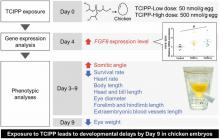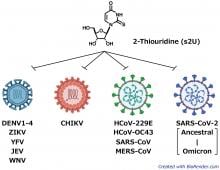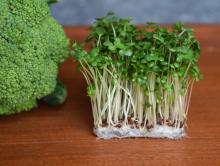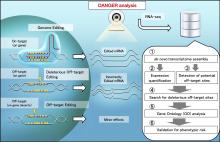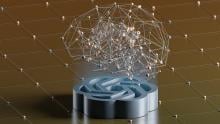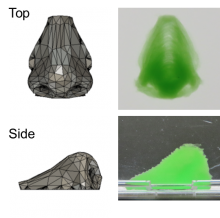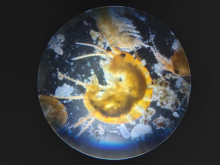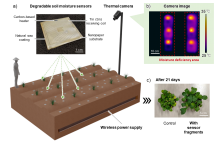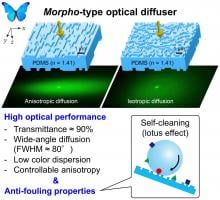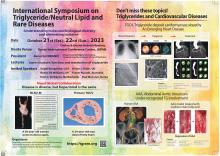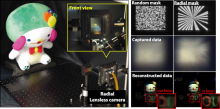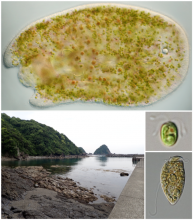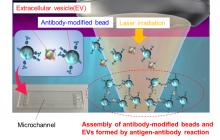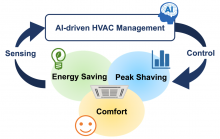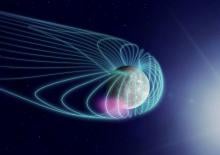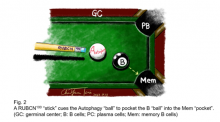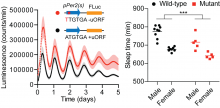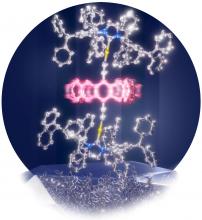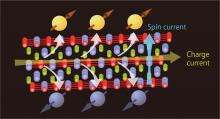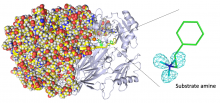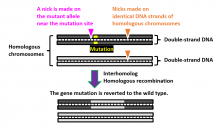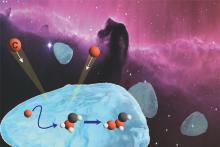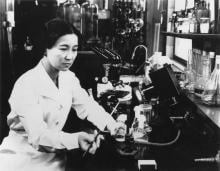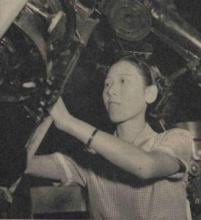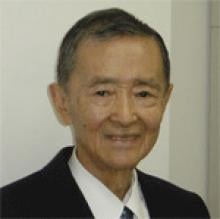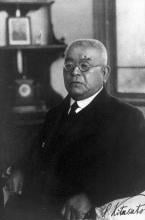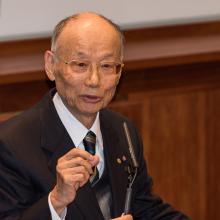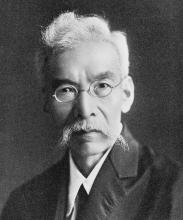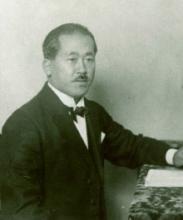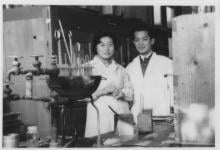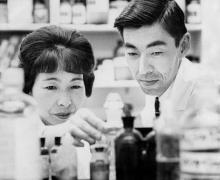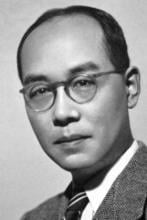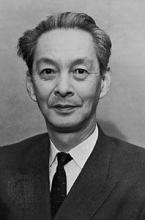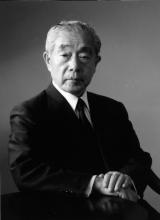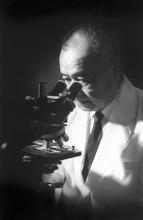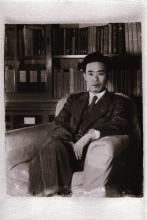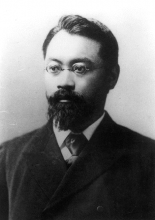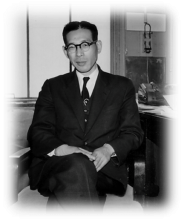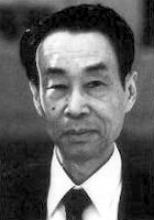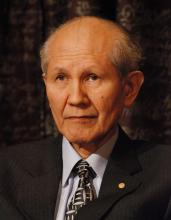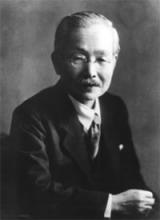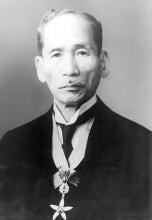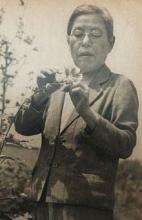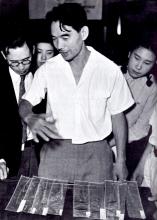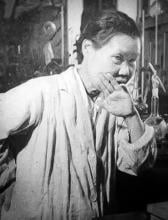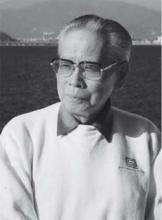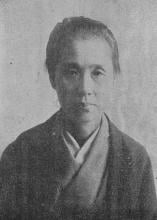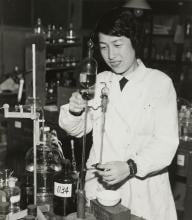Japan
News

20 Oct 2023
This study examined how the origin (wild or hatchery-reared), feeding area (Baltic Sea mainstem, Bosnian Sea, and Gulf of Finland), and organic halogen compound (OHC) concentrations of Baltic Sea Atlantic salmon (Salmo salar) affect the salmon liver proteome, transcriptome, and oxidative stress markers. Results suggest that the Baltic salmon liver proteome, together with the transcriptome, is influenced more by OHC concentrations and oxidative stress levels in the feeding area than by their origin.
20 Oct 2023
Structural characteristics of environmental pollutants and computer simulations predict effects on the endocrine system of seals
20 Oct 2023
A broad-spectrum antiviral drug candidate, 2-thiouridine, that targets positive-strand RNA viruses has been identified and characterized.
20 Oct 2023
A research team from Osaka Metropolitan University has found that polysulfides are abundant in broccoli sprouts. They found that the amount of polysulfides increased dramatically during growth, by an approximately 20-fold in seeds by the fifth day of germination. Furthermore, a comprehensive analysis of the polysulfides detected a number of polysulfide candidates whose structures have not yet been determined. The identification of these unknown polysulfides and detailed analysis of their pharmacological activities are expected to enable the development of new preventive and therapeutic strategies and medicines for cancer, neurodegenerative diseases, stroke, inflammation, and other diseases.
20 Oct 2023
Risk-averse on/off-target assessment for CRISPR editing without reference genome
16 Oct 2023
The latest ‘large language model’ artificial intelligence system, GPT-4, could aid chemistry researchers, but limitations reveal the need for improvements.
16 Oct 2023
Researchers from Osaka University developed a cell-friendly means of bioprinting at high fidelity. By successive injection of a cell-based ink and a printing support, the ink solidified into defined geometries, even into the shape of a human nose. Printed cells remained viable for at least two weeks. This work is an important milestone toward developing lab-grown tissues and organs, and eventually advancing regenerative medicine as well as animal-free drug safety testing.
13 Oct 2023
A new amphipod species thrives at record temperatures in nearby hot spring pools of an ancient Inca city, defying norms for these typically cold-dwelling animals. Unraveling its key adaptations can give clues for the survival of other freshwater creatures in our warming world.
12 Oct 2023
Osaka Metropolitan University scientists, in cooperation with researchers from the National Astronomical Observatory of Japan, have captured cosmic-ray extensive air showers with unprecedented precision using the prime-focus wide field camera mounted on the Subaru Telescope, situated atop Mauna Kea in Hawaii. Analyzing approximately 17,000 images captured between 2014 and 2020, they pinpointed 13 images containing extensive air showers, with a number of particle tracks far exceeding the usual count.
12 Oct 2023
Researchers from Osaka University developed wirelessly powered soil moisture sensing technology that will help meet the needs of sustainable precision agriculture. Both the soil moisture content and the position of each sensor are readily detected and transmitted, even at high sensor densities. The sensors are largely biodegradable and can be tilled into the soil at the end of the crop season. This work might help farmers allocate resources to cropland in a timely, targeted manner.
12 Oct 2023
Researchers from the Institute of Industrial Science, The University of Tokyo, synthesize a two-center zinc complex that absorbs visible light as a solid and in solution.
11 Oct 2023
A research team led by Osaka University developed a theranostics approach to both diagnose and treat certain pancreatic cancer cases. They radioactively labeled a monoclonal antibody targeting glypican-1, which is highly expressed in pancreatic cancer, then administered it to disease model mice. One label, 89Zr, showed high uptake in tumors, which would allow early detection of pancreatic cancer with PET scans. Another label, 211At, was used with alpha therapy to significantly slow tumor growth.
11 Oct 2023
Researchers at Osaka University developed a nanostructured light diffuser that provides balanced lighting by diffracting blue and red light, and can be cleaned by simple rinsing with water. The diffuser consists of cheap materials and can be shaped with common tools. A protective glass coating maintains the diffuser’s optical performance yet adds durability. This work might improve the visual performance of everyday lighting displays.
11 Oct 2023
The International Symposium on Triglyceride/Neutral Lipid and Rare Diseases will be held at the Kyoto International Conference Center on October 21 and 22, 2023. The symposium is organized by the International Symposium on Triglyceride/Neutral Lipid and Rare Diseases Conference Committee, which is led by Dr. Ken-ichi Hirano (Graduate School of Medicine, Osaka University) and the Japan Intractable Diseases (Nanbyo) Research Foundation.
10 Oct 2023
To extend the depth of field in mask-based lensless cameras, researchers from Osaka University replaced conventionally coded masks with a radial-coded mask optimized to balance the frequency response. As a result, the point spread function depends less on distance, and subjects at various depths can be clearly imaged. Experiments in simulation and on a prototype show that the depth of field of the camera is extended when the proposed radial mask is used.
05 Oct 2023
Acoels have been found to host a wide diversity of symbiotic, photosynthetic microalgae.
05 Oct 2023
Osaka Metropolitan University researchers have used the power of laser light to accelerate the reaction between cancer cell-derived extracellular vesicles—a kind of nanoparticle—and antibody-modified microparticles. The three-dimensional structure of the resulting aggregates was then analyzed using a confocal optical system. The results demonstrated the ability to measure, within 5 minutes, approximately 1,000 to 10,000 nanoscale EVs contained in a 500 nL sample.
03 Oct 2023
Researchers from Osaka University have developed a data-driven AI algorithm for controlling the heating and cooling of an office building. The system does not require ambient sensors or specific knowledge of the building’s rooms. During heating operations, the system was able to achieve energy savings of up to 30%, which can represent significant reductions to cost and environmental impact.
03 Oct 2023
The researchers from Osaka University showed how two psychological factors, belief in just deserts (BJD) and human rights restrictions (HRR), differ across countries. BJD tended to be higher in Japan and lower in the UK, whereas HRR was higher in China and lower in Japan. Public health messages for high-HRR individuals could potentially be used effectively to reduce disease-related discrimination and prejudice.
29 Sep 2023
Observations during two flybys by the Mio spacecraft as part of the BepiColombo International Mercury Exploration Project have revealed that chorus waves occur quite locally in the dawn sector of Mercury. Mercury's magnetic field is about 1% of that of Earth, and it was unclear whether chorus waves would be generated like on Earth. The present study reveals that the chorus waves are the driving source of Mercury’s X-ray auroras, whose mechanism was not understood.
29 Sep 2023
The authors discovered a shorter isoform of Rubicon called RUBCN100, which enhances autophagy in B cells.
29 Sep 2023
The authors identified a structure in the circadian mRNA Period2 that affects the sleep-wake cycle. The results indicate how translation and post-transcriptional processes influence the body’s internal clock and its impact on sleep patterns.
29 Sep 2023
Researchers at Osaka Metropolitan University have succeeded in printing uniformly sized droplets with a diameter of approximately 100 µm using a liquid film of fluorescent ink. This ink, with a viscosity roughly 100 times that of water, was irradiated with an optical vortex, resulting in prints of exceptional positional accuracy at the micrometer scale.
29 Sep 2023
Concave, umbrella-like metal complexes provide space to enable the largest molecular rotor operational in the solid-state.
21 Sep 2023
A recent discovery in spintronics could potentially transform future electronics. A group of researchers have revealed the key role of cobalt-tin-sulfur in reducing energy consumption, unlocking new possibilities for high-speed, low-power spintronic devices.
20 Sep 2023
A team led by researchers at SANKEN (The Institute of Scientific and Industrial Research), at Osaka University has used neutron crystallography to image all of the atoms in a radical intermediate of a copper amine oxidase enzyme. They disclosed previously unknown details, such as precise conformational changes, that help to explain the enzyme's biochemistry. This work might help researchers engineer enzymes that facilitate unusual chemistry or are highly efficient at room temperature that are useful in chemical industry.
15 Sep 2023
Researchers led by Osaka University developed a novel genome editing technique known as NICER, which results in significantly fewer off-target mutations than CRISPR/Cas9 editing. The technique uses a different type of enzyme that makes single-stranded “nicks” in the DNA. Repair of these nicks is more efficient and accurate than repair of double-strand breaks caused by the current CRISPR/Cas9 editing. This technique represents a novel approach for the treatment of genetic diseases caused by heterozygous mutations.
15 Sep 2023
A reanalysis of studies on night shift naps reveals the ideal snoozing schedule that may help combat fatigue and drowsiness when staying up all night.
14 Sep 2023
Lab-based studies reveal how carbon atoms diffuse on the surface of interstellar ice grains to form complex organic compounds, crucial to reveal the chemical complexity in the universe.
Events

27 Aug 2008
Realizing high quality of life and extension of health life expectancy through the consolidation of advanced science, health studies, and medical care

12 Jul 2008
The sessions include "Promise and problems of molecular targeted therapiesin children: Lessons from Hedgehog pathway inhibitors", "Regeneration of the damaged Central Nervous System", "Imaging cognition and genetics" and "Aquaporin water channels: from atomic structure to clinical medicine"

11 Jun 2008
The British Nobel Laureate Lecture Series, a collaboration between Keio University and the British Embassy, commemorates the 150th anniversaries of the founding of Keio University, and the initiation of UK- Japan diplomatic relations. Four lectures will be held as a part of Keio's 150th Anniversary Commemorative Project and UK-JAPAN 2008.

06 Jun 2008
Topics include Latest Trend in Standardization of IPTV, Trend in Standardization of Content Creation and Digital Rights Permission Code, International Standardization of 4th Generation Mobile Communication and Strategy in Japan and more

12 Jun 2008
A collaboration between Keio University and the Dutch Embassy in Japan, this seminar on international peace cooperation will focus on the relationship between security and development in the provision of international assistance to conflict and post-conflict areas.

20 May 2008
Postsocialist economies in Asia as well as in Europe pose many problems for economic policy makers and the international community since the fall of the Iron Curtain. This lecture will provide a broad review of the experience of dealing with postsocialist economies that has been accumulated at the Halle Institute for Economic Research.

29 May 2008
Tokyo, Japan - Special Lecture in English on US-China Relations by Professor Harry Harding, from George Washington University. This programme is sponsored by Graduate School of Asia-Pacific Studies and Waseda University Institute of Asia-Pacific Studies.

09 May 2008
Keio University and the British Embassy in Tokyo present KEIO 15O/ UK-JAPAN 2008 British Nobel Laureate Lecture Series

30 May 2008
KEIO University and the Embassy of Greece to Japan are organising a symposium dedicated to the most translated Greek writer of the 20th century, Νikos KAZANTZAKIS.

12 Apr 2008
Where Is Japan Headed? :Views and Expectations from Overseas

10 Mar 2008
The Tokyo University of Science will be holding the first International Collaboration Workshop in March 2008 with the University of California at Davis, University of California at Santa Cruz and Ohio State University. Another nine world leading research universities are invited. The topics of the workshop is focusing on "Materials Research" f

10 Mar 2008
Tokyo University of Science will hold the 3rd International Symposium on "Promotional Bases for Leading Architectural Fire Safety Engineering Research" at Tokyo, March 10 and 11

11 Mar 2008
The Model G8 Youth Summit 2008 will be held in Yokohama and Tokyo from 11 to 15 March, 2008. Participants will act as government representatives, secretaries, and sherpas to discuss a topic. A panel discussion will also be held in regards with environmental issues. Panelists include leading figures from various fields such as Prof. Heizo Takenaka.

26 Feb 2008
This conference will serve to launch JCOR (the Japanese Centre for Ontological Research), which has recently been funded by the Japanese Government's Ministry of Education and Science (MEXT) under the framework of the Open Research Centre on Logic and Formal Ontology.

20 Dec 2007
New Delhi, India - Author, poet, foreign policy expert, columnist, and Rhodes scholar, former Ambassador Aftab Seth will speak on "Japan Today: A Deflated Giant?'

18 Sep 2007
SOI Asia and Platform Design Laboratory,Keio Research Institute at SFC will hold an online international symposium on Entrepreneur on Tuesday, September 18th, 2007, from 16:00 to 19:00(Japan Time).

18 Sep 2007
Skill Science is a new multidisciplinary research area with approaches including artificial intelligence, cognitive science, sports science, bio-mechanism, ecological psychology and so on. In the future, it is expected to bring insight into researches on robotics, aiming to bring human-like flexible and skillful movement into realization.

03 Sep 2007
The Quantum Group of the Quantum Bio-Informatics Center’s (QBIC) Research Center will host an event entitled the “Mini-Workshop on Recent Experimental Results of Cuprates.” Researchers from differing fields (STM, ARPES, Neutron, NMR, etc.) will be invited to the mini-workshop to explore its topic over the course of two days.

07 Jun 2007
The Research Center for the Holistic Computational Science of the TUS Research Institute for Science and Technology is to hold an international symposium on the theme "Frontiers in Computational Science of Nanoscale Transport" in conjunction with the Atomistix Workshop 2007.

27 Apr 2007
London - World renowned academics from Keio University and University College London will be presenting the latest advances in neuroscience research in this afternoon symposium. Attendance is free of charge.

26 Mar 2007
Tokyo Japan - In celebration of its 150-year anniversary next year, Keio University will organize a two-day workshop for graduate students entitled "Changing Faces of Nationalism in Asia" on 26-27 March 2007.

14 Mar 2007
The International Conference in Quantum Bio-Informatics Center (QBIC) will be held at Noda Campus of Tokyo University of Science from March 14 to March 17, 2007

02 Dec 2005
Theme: Advanced technologies for building sustainable society

14 Jan 2006
This event is Free of charge and will be conducted in English

29 Jun 2005
Health social security in Japan is at a cross-road: whether to gradually reduce the coverage to a basic minimum as in the United States, or to maintain the current level following the European example.
Researchers
Sorry, no researchers coming up for this topic.
Giants in history
Ruby Sakae Hirose (1904 – 1960) was a Japanese-American scientist whose research contributed significantly to our understanding of blood clotting, allergies and cancer.
Haisako Koyama (1916 – 1997) was a Japanese solar observer whose dedication to recording sunspots – cooler parts of the sun’s surface that appear dark – produced a sunspot record of historic importance.
Michiaki Takahashi (17 February 1928 – 16 December 2013) was a Japanese virologist who developed the first chickenpox vaccine.
Toshiko Yuasa (11 December 1909 – 1 February 1980) was the first Japanese female physicist whose research on radioactivity shed light on beta decay – the process in which an atom emits a beta particle (electron) and turns into a different element.
Baron Kitasato Shibasaburo (29 January 1856 – 13 June 1931) was a Japanese physician and bacteriologist whose work led to a new understanding of preventing and treating tetanus, diphtheria and anthrax.
By isolating soil microorganisms and studying the compounds they produce, Satoshi Omura (born 1935) discovered almost 500 organic compounds with unique properties that were produced by these microorganisms, including many new antibiotics.
In 1915, pathologist Katsusaburo Yamagiwa and his research assistant Koichi Ichikawa became the first to prove that chronic exposure to chemicals can cause cancer.
In 1915, Koichi Ichikawa along with pathologist Katsusaburo Yamagiwa became the first to prove that chronic exposure to chemicals can cause cancer.
Reiji Okazaki (8 October 1930 – 1 August 1975) and Tsuneko (7 June 1933) were a Japanese couple who discovered Okazaki fragments – short sequences of DNA that are synthesized during DNA replication and linked together to form a continuous strand.
Tsuneko (7 June 1933) and Reiji Okazaki (8 October 1930 – 1 August 1975) were a Japanese couple who discovered Okazaki fragments – short sequences of DNA that are synthesized during DNA replication and linked together to form a continuous strand.
Husband and wife team, Kimishige (3 December 1925 – 6 July 2018) and Teruko Ishizaka (28 September 1926 – 4 June 2019) discovered the antibody class Immunoglobulin E (IgE) that triggers allergic reactions. They also discovered that IgE antibodies attach to white blood cells, known as mast cells, releasing histamine, which causes allergic reactions.
Husband and wife team, Kimishige (3 December 1925 – 6 July 2018) and Teruko Ishizaka (28 September 1926 – 4 June 2019) discovered the antibody class Immunoglobulin E (IgE) that triggers allergic reactions. They also discovered that IgE antibodies attach to white blood cells, known as mast cells, releasing histamine, which causes allergic reactions.
Japanese chemist Takamine Jokichi (3 November 1854 – 22 July 1922) founded the Tokyo Artificial Fertilizer Company, where he isolated a starch-digesting enzyme (named takadiastase) from the fungus Aspergillus oryzae.
Hideki Yukawa (23 January 1907 – 8 September 1981) was awarded the Nobel Prize in Physics in 1949 for predicting the existence of the pi meson subatomic particle. Japan’s first Nobel laureate, Yakawa also expressed his support for nuclear disarmament by signing the Russell–Einstein Manifesto in 1955.
Shinichiro Tomonaga (31 March 1906 – 8 July 1979), together with Richard Feynman and Julian Schwinger, was awarded the Nobel Prize in Physics in 1965, for their contributions to advance the field of quantum electrodynamics. Tomonaga was also a strong proponent of peace, who actively campaigned against the proliferation of nuclear weapons and promoted the peaceful use of nuclear energy.
Japanese chemist Kenichi Fukui (4 October 1918 – 9 January 1998) was the first Asian scientist to be awarded the Nobel Prize in Chemistry. Together with Roald Hoffman, he received this honour in 1981 for his independent research into the mechanisms of chemical reactions.
Minoru Shirota (April 23, 1899 – March 10, 1982) was a Japanese microbiologist who invented the popular fermented drink Yakult.
Japanese physicist Ukichiro Nakaya (1900-1962) made the world’s first artificial snowflakes. He started his research on snow crystals in the early 1930s at Hokkaido University, where there is an unlimited supply of natural snow in winter. By taking over 3,000 photographs, he established a classification of natural snow crystals and described their relationship with weather conditions.
The techniques that make industrial pearl culturing possible were developed over a century ago at the Misaki Marine Biological Station in Japan. The station’s first director, Professor Kakichi Mitsukuri, emphasized to Kokichi Mikimoto in 1890 that stimulating pearl sac formation was important for pearl growth, and they went on to successfully develop methods for culturing pearls.
The field of solid-state ionics originated in Europe, but Takehiko Takahashi of Nagoya University in Japan was the first to coin the term ‘solid ionics’ in 1967. ‘Solid-state ionics’ first appeared in 1971 in another of his papers, and was likely a play on ‘solid-state electronics’, another rapidly growing field at the time.
Chika Kuroda (24 March 1884 – 8 November 1968) was a Japanese chemist whose research focussed on the structures of natural pigments.
Motoo Kimura (13 November 1924 – 13 November 1994) was a Japanese theoretical population geneticist who is best remembered for developing the neutral theory of molecular evolution.
Osamu Shimomura (27 August 1928 – 19 October 2018) was a Japanese organic chemist and marine biologist who dedicated his career to understanding how organisms emitted light.
Kikunae Ikeda (8 October 1864 – 3 May 1936) was a Japanese chemist who discovered the fifth basic taste, umami.
Umetaro Suzuki (7 April 1874 – 20 September 1943) was a Japanese scientist best remembered for his research on beriberi, a disease caused by vitamin B1 deficiency, characterized by limb stiffness, paralysis and pain.
Kono Yasui (16 February 1880 – 24 March 1971) was a Japanese botanist who researched the genetics of poppies, corn and spiderworts and surveyed the plants that had been affected by the nuclear fallout after the atomic bombings of Hiroshima and Nagasaki.
Hitoshi Kihara (1893 – 1986) was one of the most famous Japanese geneticists of the 20th century. One of his most significant contributions was identifying sex chromosomes (X and Y) in flowering plants.
Michiyo Tsujimura (17 September 1888 – 1 June 1969) was a Japanese agricultural scientist and biochemist recognized for her research of green tea components.
A Japanese surgeon, Tetsuzo Akutsu (20 August 1922 – 9 August 2007) built the first artificial heart capable of keeping an animal alive.
Ogino Ginko (3 March 1851 – 23 June 1913) was the first registered female doctor to practise modern medicine in Japan.
Japanese geochemist Katsuko Saruhashi developed the first method and tools for measuring carbon dioxide in seawater


